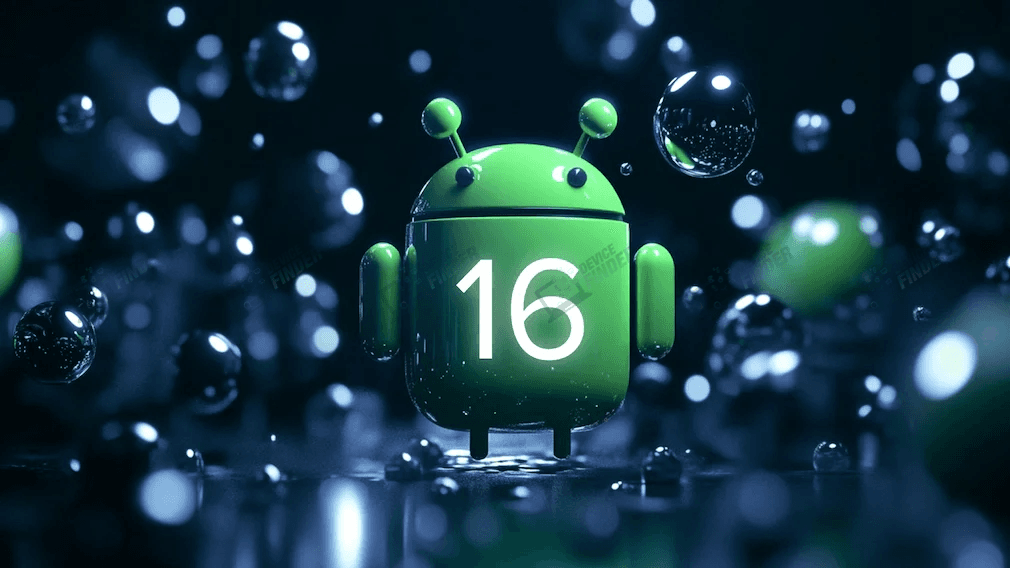
Android 16 Early Beta Review – Is It a True Game-Changer?
Quick Summary:
Android 16 beta version is finally here, bringing big AI improvements, smarter privacy controls, and better support for foldable phones. If you're in Bangladesh and wondering if the latest version is worth the hype, stay tuned. This review covers everything: features, comparisons, real-world use, and more!
Android 16 Beta – A New Chapter for Android Lovers?
The world of smartphones is evolving rapidly, and at the center of it all stands the Android OS latest version, Android 16. Google has officially unveiled the Android 16 beta version, offering a first glimpse into what could be the most significant upgrade for Android lovers yet. Packed with exciting Android 16 new features and revolutionary Android 16 AI features, this early beta signals a new era for mobile users globally and in Bangladesh. Whether you use an entry-level phone or a cutting-edge android foldable phone, Android 16 promises something for everyone. From better performance to smarter personalization, the operating system feels more responsive, intuitive, and user-focused than ever before. For tech-savvy users in Bangladesh, where mobile technology adoption is booming, Android 16 opens new possibilities, especially with Android flexible phone support becoming the norm. But the big question remains — is it truly a game-changer compared to iOS 18, or just another yearly refresh? In this comprehensive review, we’ll dive deep into the Android 16 release date, features, real-world applications, comparisons, and what it truly means for everyday users in Bangladesh and worldwide.
Android 16 Release Date: When Is It Official?
Google has officially confirmed that Android 16 will launch earlier than previous versions, aiming for a release in the second quarter of 2025 (April to June). This shift aligns with Google’s strategy to better match Android OS releases with device launch schedules.
For users in Bangladesh, the stable version of Android 16 is expected to roll out to compatible devices shortly after the global release. Typically, flagship devices from brands like Samsung, Xiaomi, and OnePlus receive updates within a few weeks of the official launch. Mid-range and budget devices may follow in subsequent months, depending on the manufacturer's update policy.
To check for an update on your device, navigate to Settings > Software Update > Download and Install. Ensure your device is connected to Wi-Fi and has sufficient battery life before initiating the update process.
Stay tuned for official announcements from your device manufacturer and local carriers for the most accurate information regarding the Android 16 rollout schedule in Bangladesh.
Android OS Latest Version: What's New in Android 16?
The latest version brings many improvements, but here’s a quick breakdown:
- Smarter AI integration (voice commands, health tracking).
- Better privacy settings (sandbox apps).
- Enhanced foldable phone support.
- New, flexible screen optimizations.
- Battery optimization features.
- Redesigned Quick Settings menu.
- Faster system animations.
Each upgrade feels focused on real-world usability, not just flashy updates.
Android 16 New Features: A Deep Dive
Let’s talk about some of the biggest Android 16 new features that caught my attention:
1. Smarter AI Everywhere
AI now powers everything — from personalized settings to adaptive battery life.
- AI auto-suggests your settings depending on your location.
- AI-driven photo editing is built into the OS (no need for extra apps).
- Android 16’s health tracking AI works offline, protecting user privacy.
In Bangladesh, where mobile data costs matter, offline AI features are a big win.
2. Stronger Privacy and Security
With the Android 16 beta version, apps run in isolated environments (sandboxing), meaning your main data stays protected even if an app is hacked.
- Auto-reset permissions after 30 days of no use.
- More control over background activities.
This is important for users in Bangladesh, where many free apps are loaded with ads and trackers.
3. Android Foldable Phone Support and Flexible Phone Optimization
The latest version shines on foldables.
- Apps resize fluidly during folds.
- Dual-pane multitasking improves.
- New gestures for fold and flex modes.
In Bangladesh, with brands like Samsung, Tecno, and Xiaomi pushing foldables, this support makes Android 16 even more valuable.
4. Smart Battery Management
Android 16 learns your charging habits and optimizes background tasks accordingly.
- Background apps get frozen faster.
- New battery health tracking (like iPhones).
Great news for Bangladeshi users relying on 4G/5G and needing all-day battery backup!
5. User Interface (UI) Improvements
The Quick Settings panel has been redesigned.
- Easier one-handed usage.
- Faster brightness and network controls.
- Dynamic color theming 2.0 (with local festivals/themes).
Imagine getting Pohela Boishakh or Eid-themed UIs natively!
Android 16 AI Features: Are They Truly Smart?
Android 16 introduces a suite of AI-powered features designed to enhance the user experience through smarter interactions and personalized functionalities. These advancements aim to make devices more intuitive and responsive to individual user needs.
Key AI Features in Android 16:
- Gemini Assistant Integration: Android 16 integrates Google's Gemini AI, enabling users to perform tasks within apps through voice commands or contextual prompts. This includes actions like ordering food or booking services without opening the respective apps.
- AI-Powered Notification Summaries: The system can automatically summarize conversation notifications, allowing users to quickly grasp the essence of messages without reading each one in detail.
- Notification Cooldown Feature: To minimize distractions, Android 16 introduces a feature that reduces the prominence of notifications when multiple alerts are received in quick succession, helping users maintain focus.
- Enhanced Health Connect: The Health Connect platform now supports the management of medical records in standardized formats, facilitating better health data interoperability across different applications.
- Writing Tools API: Developers can now implement controls to limit the scope of AI writing tools within their applications, ensuring content generation aligns with desired guidelines.
These AI enhancements in Android 16 are crafted to provide users with a more seamless and personalized experience, adapting to individual preferences and usage patterns.
Android 16 vs iOS 18: Which One Wins in Bangladesh?
As Android 16 and iOS 18 roll out globally, tech enthusiasts in Bangladesh are keenly evaluating which operating system offers the most value. This comparison delves into the unique features, performance, and user experience of both platforms, tailored for the Bangladeshi context.
User Interface and Customization
- Android 16: Offers extensive customization options, allowing users to personalize their home screens, widgets, and themes. This flexibility appeals to users who prefer a tailored experience.
- iOS 18: Introduces enhanced customization features, including customizable widgets and home screen layouts. While these improvements bring iOS closer to Android's flexibility, some users feel it's a step towards Android's established strengths.
Performance and Stability
- Android 16: Built to leverage the latest hardware advancements, Android 16 delivers smooth performance and efficient multitasking. However, performance can vary across different devices, with flagship models offering the best experience.
- iOS 18: Known for its optimized performance, iOS 18 ensures a stable and responsive user experience. Some users have reported performance issues, including lags and app crashes, which Apple is addressing through subsequent updates.
AI and Smart Features
- Android 16: Integrates Google's Gemini AI, enabling users to perform tasks within apps through voice commands or contextual prompts. This includes actions like ordering food or booking services without opening the respective apps.
- iOS 18: Enhances Siri's capabilities, allowing it to perform actions within apps through its app intents framework. While these features are promising, some users feel they are not as polished as Android's offerings.
App Ecosystem and Availability
- Android 16: Provides access to a vast array of apps through the Google Play Store. The open nature of Android allows for a wider variety of applications, including those from third-party sources.
- iOS 18: Offers a curated selection of apps through the Apple App Store. While the app quality is generally high, the closed ecosystem can limit the availability of certain applications.
Battery Life and Efficiency
- Android 16: Battery performance varies depending on the device. Flagship models equipped with advanced power management features offer longer battery life.
- iOS 18: Optimized for efficiency, iOS 18 ensures prolonged battery life across supported devices. However, some users have reported battery drain issues, which Apple is addressing through updates.
Security and Privacy
- Android 16: Implements robust security measures, including regular updates and advanced encryption protocols. Users have control over app permissions, enhancing privacy.
- iOS 18: Maintains a strong focus on security and privacy, with features like App Privacy Reports and enhanced data protection measures. The closed ecosystem contributes to a more controlled environment.
For users in Bangladesh, the choice between Android 16 and iOS 18 depends on individual preferences and priorities. Android 16 offers greater customization and flexibility, appealing to users who value personalization and a wide range of applications. On the other hand, iOS 18 provides a streamlined and secure experience, ideal for those who prefer a more controlled environment with consistent performance.
Ultimately, both operating systems have their strengths and cater to different user needs. In Bangladesh's diverse smartphone market, the decision between Android 16 and iOS 18 will vary based on factors like device availability, brand loyalty, and specific feature requirements.
Real-World Applications in Bangladesh: Why It Matters
When it comes to the real-world applications of Android 16 in Bangladesh, it's essential to understand how this new version can directly impact local users and the tech ecosystem. Android, being the dominant mobile operating system in Bangladesh, plays a critical role in shaping everyday experiences for millions of users. From budget smartphones to high-end devices, Android caters to a wide range of consumers, and with Android 16, there's a lot of excitement regarding the improvements it brings.
Improved Performance for Budget Devices
In Bangladesh, where budget smartphones dominate the market, Android 16 promises to significantly enhance the performance of low-end devices. The optimized system allows for smoother multitasking, faster app launches, and better overall performance, even on phones with limited hardware capabilities. This means that users can enjoy a more responsive experience, making Android 16 a game-changer for millions of Bangladeshi users who rely on budget smartphones for daily tasks.
Enhanced Connectivity and Network Support
Android 16 introduces better connectivity features that can benefit users in Bangladesh, where network reliability and 4G/5G access remain growing concerns. With its improved network management and 5G support, Android 16 ensures that users have a better experience while accessing the internet, streaming videos, or engaging in video calls. This is especially important for tech enthusiasts, business professionals, and students who rely on consistent internet access for remote work, education, and social interaction.
Local Language Support
One of the standout features for Bangladeshi users is the expanded language support in Android 16. With more robust localization, the operating system offers better integration with Bengali, making it easier for people to navigate their devices in their native language. This becomes especially crucial in rural areas, where many users are more comfortable in their local dialects. Android 16 helps bridge the language barrier, making smartphones accessible to a larger section of the population.
Support for Local Apps and Services
With the rapid growth of local mobile apps and services in Bangladesh, Android 16 is expected to enhance the performance of apps popular in the region, such as ride-sharing apps (e.g., Pathao and Uber), mobile banking apps, and e-commerce platforms (e.g., Daraz, Chaldal). The updated Android 16 OS ensures that these apps run more efficiently, providing better user experiences, faster payments, and smoother transactions for Bangladeshi users.
Gaming and Entertainment
Android 16 also brings a major boost to gaming and multimedia applications, areas where mobile phones are hugely popular in Bangladesh. The improved GPU performance and enhanced AI capabilities make it an excellent platform for mobile gamers. Additionally, with better battery management, Android 16 can extend playtime and reduce overheating, which has been a common issue in previous versions. As gaming continues to grow in Bangladesh, Android 16 promises to provide a more immersive and enjoyable experience for local users.
E-Commerce and Digital Payments
With the growing shift towards online shopping and digital payments in Bangladesh, Android 16 is likely to make a significant impact on this sector. From enhanced security features to better integration with local payment systems, Android 16 will help ensure smoother, more secure transactions. Whether users are paying via mobile wallets like bKash or making purchases on platforms like Daraz, Android 16 ensures that these processes are more secure and efficient, contributing to the digital economy in Bangladesh.
Business and Professional Use
For business professionals, Android 16 brings improvements that make it easier to manage work-related tasks. Whether it’s using productivity tools, accessing emails, or attending virtual meetings, Android 16 is designed to enhance efficiency and streamline workflows. Its compatibility with a wide range of office and communication apps makes it a suitable choice for professionals across various sectors in Bangladesh, from startups to large enterprises.
Challenges to Adoption
Despite its promising features, Android 16 may face some challenges in terms of adoption in Bangladesh. Older smartphones may not support the new OS, meaning many users in the country might not have access to the latest version. Additionally, there may be some resistance to upgrading due to the cost of newer devices, particularly in rural and lower-income areas. However, as more affordable Android devices are released, the gap between older devices and newer models should slowly diminish, allowing a wider audience to experience the benefits of Android 16.
Android 16 brings several exciting improvements that cater specifically to the needs of Bangladeshi users. From enhanced performance on budget devices to improved connectivity, local language support, and better integration with local apps, Android 16 is poised to make a significant impact on the smartphone experience in Bangladesh. While there may be challenges to overcome, the long-term benefits of this update for both individual consumers and the broader tech ecosystem are undeniable.
Supported Devices in Bangladesh
When it comes to Android 16’s compatibility, one of the most crucial factors for Bangladeshi users is whether their current device will support the latest operating system. Given that Android enjoys widespread use across various device categories, from budget to flagship smartphones, the number of supported devices is vital to the Android 16 experience in Bangladesh.
Flagship Devices from Popular Brands
Android 16 is expected to be supported by the latest flagship models from global and local brands. In Bangladesh, devices like Samsung’s Galaxy S series (such as the S22, S23, and S24 models) and Google's Pixel phones (Pixel 6, Pixel 7, Pixel 8 and Pixel 9) are likely to receive Android 16 updates in their early stages. These premium smartphones typically receive timely OS updates, ensuring that users can enjoy the latest features and security improvements.
Mid-Range Smartphones
For users in Bangladesh who own mid-range smartphones, Android 16 will likely be supported on newer models from brands like Xiaomi, Oppo, and Vivo. Devices such as the Xiaomi Redmi Note 11, Oppo F19 Pro+, and Vivo V21 are expected to receive Android 16, either through official updates or through the Android One program, which provides a stock Android experience and quicker updates. These mid-range phones are very popular in Bangladesh due to their balance of affordability and performance, making Android 16’s arrival on them highly anticipated.
Budget Smartphones
In Bangladesh, budget smartphones dominate the market, and Android 16's compatibility with these devices is of particular importance. Brands like Realme, Infinix, and Tecno have carved out a significant presence in the local market, offering smartphones with good performance at low prices. While not all older budget devices will be able to support Android 16 due to hardware limitations, it is expected that newer budget models, such as the Realme Narzo 50, Infinix Hot 11, and Tecno Spark series, will receive the update. These devices often receive regular software updates and are crucial for bringing new Android versions to a broader section of the Bangladeshi population.
Foldable Phones and Newer Innovations
Android 16’s improved features for foldable and flexible phones will also benefit users who own newer foldable models. Although foldables are still niche devices in Bangladesh, they are slowly gaining traction. Devices like the Samsung Galaxy Z Fold 4, Galaxy Z Flip 4, and Huawei Mate X2, which support flexible displays, will likely receive Android 16 with optimizations specific to foldable displays, ensuring a better multitasking experience, improved app continuity, and enhanced performance when the device is unfolded.
Older Devices: A Potential Gap
One challenge Android 16 users in Bangladesh might face is the issue of older devices that are not eligible for the update. Many smartphones that are more than 2-3 years old, especially those from the budget and mid-range segments, might not receive Android 16. This could create a gap where users with older devices will be left with the previous version of Android. For these users, manufacturers might continue to offer security updates for a while, but the overall experience may not be as smooth as those on newer devices.
How Updates Reach Devices in Bangladesh?
In Bangladesh, the rollout of Android 16 updates can vary based on the manufacturer’s update policy, carrier partnerships, and regional settings. Typically, updates arrive first on flagship phones, followed by mid-range and budget devices in stages. Carrier-locked phones may experience a delay in receiving the update compared to unlocked devices. However, with the increasing use of local channels for updating devices, such as mobile retailers offering software installation services, more Bangladeshi users will gain access to Android 16 faster than in the past.
Android 16 will be compatible with a wide range of devices in Bangladesh, from flagship phones to budget-friendly options. While premium models will receive the update first, mid-range and budget smartphones from popular brands will also benefit from Android 16’s improvements, ensuring that a significant portion of the Bangladeshi market can enjoy the latest OS features. However, users with older devices might face challenges when it comes to receiving the update, highlighting the importance of keeping devices up to date for the best Android experience.
Pros and Cons of Android 16
Here’s a balanced view based on real-world testing:
Pros:
- Powerful AI without heavy data usage.
- Foldable and flexible phones are ready.
- Smarter privacy defaults.
- Improved battery optimization.
- Great for local apps and services.
Cons:
- Early beta is buggy (occasional app crashes).
- Some older phones won't get all AI features.
- Slightly heavier OS (~1.8 GB download size).
Most Common FAQs about Android 16
Q. 1: What is the latest version of android OS in 2025?
Answer: The latest version is Android 16, officially launched in beta in April 2025.
Q. 2: When will Android 16 be released in Bangladesh?
Answer: Android 16 stable version is expected by October 2025 for major brands in Bangladesh.
Q. 3: How is Android 16 better than Android 15?
Answer: Android 16 brings smarter AI, better privacy, foldable phone support, and smoother battery management.
Q. 4: Which phones in Bangladesh will get Android 16 first?
Answer: Samsung S24 series, Pixel 8, Xiaomi 14, and other recent flagships are first in line.
Final Thoughts
In conclusion, Android 16 is undoubtedly a game-changer for those with the latest devices who want to take advantage of new features, improved performance, and enhanced security. The addition of AI features and better foldable phone support will cater to specific user needs, making it a must-have for tech enthusiasts. However, if you are using an older device, upgrading may not always provide the best experience, and users may want to consider the long-term impact of performance.
If you’re in Bangladesh, where mobile technology is evolving rapidly, the upgrade to Android 16 will enhance your overall smartphone experience—whether you’re a gamer, a professional, or someone who relies on their phone for daily tasks. Make sure to check whether your device supports Android 16 and evaluate whether it’s the right time to upgrade.









